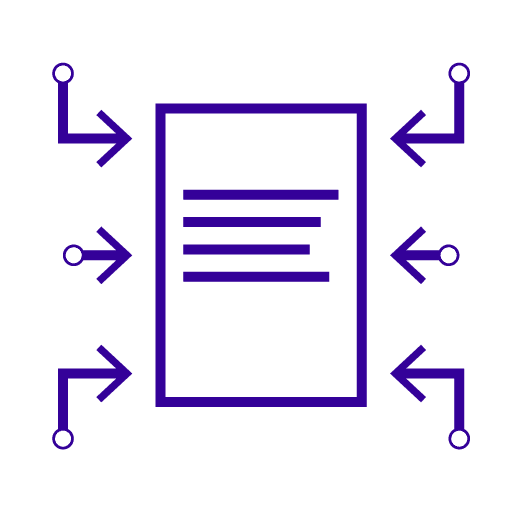What is Feedback Management
Optimize your feedback management strategy with data driven solutions. Create campaigns, integrate data, analyze effectively and empower your teams for effective feedback management.

+90%
increase in high quality feedback
-30%
decrease in negative feedback resolution time
Feedback Management Definition.
Feedback Management or Customer Feedback Management (CFM) is the process of centralizing, analyzing and using feedback, reviews and customer opinions to improve products, services and the company as a whole. The culture of feedback and the enhancement of the customer experience are key elements in the implementation of Feedback Management, which is a process of quality management and continuous improvement. Experts like who introduced the Net Promoter Score (NPS) as a key indicator of customer loyalty and satisfaction, were the first to highlight the value of strategic Feedback Systems.
AI can play a decisive part in the process of optimizing Feedback Management, giving you a competitive edge over other vendors in your market. Artificial Intelligence (AI) can automate the process of collecting, processing and analyzing customer data to detect trends, identify issues in real time and generate actionable recommendations for improvement.
Different Types of Customer Feedback

Corrective feedback clearly identifies a problem, issue or gap in a product, service or process. This type of feedback also suggests ways to correct or improve the situation.

Positive feedback emphasizes satisfaction or approval of something. It focuses on the positive aspects of a product, service, experience, process, etc., enabling good practices to be repeated.

Negative feedback, on the other hand, highlights negative aspects, frustrations, problems and drawbacks in the customer journey. Negative feedback is very important for understanding what needs to be improved.
Define Goals and Feedback Types
Identifying and articulating clear objectives is the first step in refining your feedback management process. Collaborate with your teams to ascertain the specific feedback that propels development and customer satisfaction forward. Whether it’s enhancing the Net Promoter Score (NPS), collecting precise product feedback, or understanding customer service interactions, the Feedier feedback management system is designed to pinpoint, interpret and categorize the data you need.
Harness the Right Tools and KPIs
Feedier BX comes with a sophisticated suite of tools designed to centralize, analyze and act on feedback. Import your feedback from review platforms, CSV files, or web scraping, or collect it through Feedier on various channels like surveys, emails, SMS, QR codes, etc.
Track your different Key Performance Indicators (KPI), such as CES (Customer Effort Score), CSAT (Customer Satisfaction Score) and NPS. It’s essential to focus on these Customer Experience KPIs, while correlating them with your operational KPIs to get precise insights for a better understanding of your customers’ needs.
Integrate and Act on Customer Feedback
With our advanced Feedback Management software, every piece of customer input is an opportunity for growth. Our integrated system Feedier Connect ensures that feedback is not only collected or imported but also enriched, unified, and analyzed with the help of AI, for maximum impact.
From customer data centralization through business tools like Salesforce, Hubspot, Cornerstone, etc. to in-depth analysis and data-driven actions, we provide an intuitive solution that elevates and refines your feedback management process. Thus, Customer Intelligence becomes your main competitive advantage.
Get Actionable Feedback and AI-based Recommendations
Improving Feedback Management ensures that every piece of customer input leads to meaningful change. Feedier incorporates Voice of Customer (VoC) to glean deeper insights and leverages AI with Natural Language Processing (NLP) and text analysis for effective understanding and action on customer feedback. This approach enhances the ability to close the feedback loop effectively, ensuring that each customer voice contributes to continuous enhancement and innovation.
With our Language Model (LM) trained on your data, your teams can capitalize on accurate business recommendations and enable your company to transform better and faster.
Tailored Feedback Management
Customize feedback management by applying filters based on specific criteria to improve satisfaction and reduce churn. This targeted approach ensures you address the most critical areas affecting your customers, leading to enhanced satisfaction and loyalty.
Real-Time Strategy Optimization
Personalize your dashboard with key performance indicators (KPIs) to optimize business strategies in real-time using customer feedback. By having instant access to the most relevant data, you can make informed decisions that drive your business forward and respond swiftly to market changes.
Keyword and Sentiment Analysis
Identify essential keywords in customer feedback and gauge customer sentiment through NLP sentiment analysis. This advanced technique helps you understand the key issues and emotions driving customer behavior, allowing for more precise and effective interventions.
Industry-Specific Insights
Gain valuable insights and actionable recommendations through industry-specific adaptive text analysis powered by Artificial Intelligence (AI). This cutting-edge technology provides you with tailored suggestions that are directly applicable to your business, helping you stay ahead of the competition and meet your customers’ evolving needs.
Enterprise ready.
At Feedier, we create value-added partnerships with our clients that align data trust, industry expertise and positive ROI.

Security
Feedier is ISO 27001:2022 certified, as well as fully compliant with GDPR and CCPA.
Integrations
Out-of-the-box and configurable integrations that work with your systems, at no extra cost.
Support
Take advantage of dedicated customer success and technical support available from day one.

